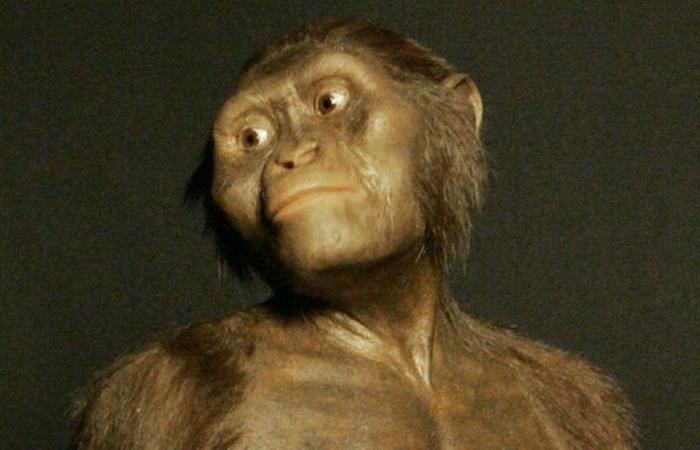“We got it! We found it whole!”. The anthropologists Donald Johanson and Tom Gray grabbed the horn of the Land Rover and started shouting the famous phrases. It was November 30, 1974, on the edge of a gorge in the Afar Desert in Ethiopia, and the discovery involved an almost complete fossilized skeleton and dozens of pieces of bones that reconstructed almost 50 percent of a 3.2 million year old female specimen. “That evening they couldn’t sleep, they talked and drank beer all night. And it was during this collective exuberance that the camp tape player played the famous Beatles song that led to the fossil being named Lucy». She tells it with an amused voice, Flavio Altamuramember of the archaeological mission at the prehistoric site of Melka Kunture in Ethiopia. He knows by heart every detail of that memorable discovery that occurred fifty years ago and that changed the understanding of human evolution. The encounter with the female of the genus Australopithecus afarensis, considered “the mother of us all”. Lucy’s light never faded. Continuous research proves this.
THE HYPOTHESIS
And precisely on the occasion of the celebrations for the anniversary of the discovery, ideally opened by the symposium of theInstitute of Human Origins dell’Arizona State University, founded by Donald Johanson himself, the latest investigations are unfolding, including on the secret of her physical appearance. The traditional graphic reworking of Lucy shows her with thick reddish-brown fur from which parts of her face, hands, feet and breasts emerge. Recent genetic investigations suggest that Lucy may have been “more hairless”. Naked. A hypothesis on which the well-known anthropologist from Sapienza University also intervenes George Manziwho dedicated a chapter of his book Ancestors to Lucy: «On the basis of indirect genetic data (i.e. comparing the genome of the lice that infest us and our closest relatives: chimpanzees and gorillas) it was hypothesized that the loss of the hair coat that characterizes us would have occurred precisely at the time of Lucy, or even earlier, suggesting that the species of the genus Australopithecus (or some of them) were already “naked apes”, to quote Desmond Morris’s 1967 best seller. This conclusion, however, has not yet convinced and we therefore continue to represent Lucy as a hairy anthropomorphic ape, albeit bipedal. But much has been discovered about Lucy: «Someone has tried to hypothesize the causes of death – reflects Giorgio Manzi – arriving at suggesting, on the basis of the fractures found, that she could have died falling from a tree: a conclusion that, however, has left a good part of the scientific community of paleoanthropologists perplexed».
BEYOND NUDITY
And beyond the possible nudity? «Perhaps the most intriguing news about Australopithecus is that these bipedal ancestors of ours had a social structure similar to that of gorillas – warns Manzi – who live in social groups with a single reproductive male, “his” females and their offspring. This would be indicated by the notable difference in size found both between the fossil remains, such as those found at the same site in Ethiopia where Lucy was found, and by the footprints from the Laetoli site in Tanzania that we studied.” For Manzi, Lucy represents an icon of science. «Lucy is important for several reasons – specifies the anthropologist – Lucy really seemed to be that creature who could represent the common ancestor of all subsequent bipedal hominids, including us Homo Sapiens. Then Lucy is a skeleton, or at least 40-50% of a skeleton, that is, much more than the fragmentary fossil remains that had been found up until then. Many things can be understood from a skeleton and Lucy’s skeleton taught us, for example, that the species of the genus Australopithecus were “amphibious” creatures, that is, they combined the characteristics of the biped with those of habitual inhabitants of the forest environment, capable of climb trees easily.”
AESTHETICS
In light of 50 years of studies, what is Lucy’s identikit? «A young female of about 18 years old – explains the anthropologist Mauro Rubinilinked to the recent discoveries on the remains of the Neanderthal at Monte Circeo, author of the essay I Wanted to Be a Monkey – Although the specimen still has a small brain, very similar to that of a chimpanzee, the pelvis and leg bones are almost functionally identical to those of modern humans, showing with certainty that these hominins walked upright. Furthermore, the dentition was also, so to speak, modern, with reduction of the canines. The jaw was very robust and equipped with strong and flattened teeth, with slightly pronounced canines and strong premolars and molars with thickened enamel, indicating a mainly vegetarian diet. A perfect Lucy in the Sky with Diamonds.
© ALL RIGHTS RESERVED
Read the full article on
The messenger



